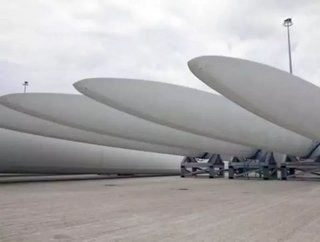New Advances in Wind Energy Technology

GE WindVAR electronics
GE has developed a way to monitor voltage in real time. The WindVAR electronics system delivers reactive power to the grid rapidly and only when it is necessary, which regulates system voltage and stabilizes weak grids. Now that this solution can supply reactive power to the grid, weak rural or remote locations can take advantage of new wind power applications. Wind power projects that are equipped with the WindVAR system, will actually bolster grids that tend to be weak. Additionally, the device has the capacity to offer emergency backup support.
According to GE, “The turbine's power electronics also reduce the inrush current to about 75 percent of full load current during the wind turbine start-up and provide ride-thru capability.”
Other types of VAR equipment can be expensive and difficult to use, minimizing its efficiencies and making it a less viable solution. WindVAR offers a more advanced solution that supplies reactive power when and where it’s needed. Currently, over 2,000 WindVAR systems are operating on wind turbines worldwide.
Second Wind's TRITON® Sonic Wind Profiler
The TRITON® Sonic Wind Profiler is the wind industry's market-leading remote sensing system. Susan Giordano, Second Wind General Manager, explains, “It sits on the ground, and can measure wind speed and direction up to 200 meters, or 600 feet in the air.”
The device is used throughout all phases of the wind project lifecycle. Giordano says, “You can use it in the early phases to determine windy locations that you might want to explore further for wind farms. Because it’s mobile, unlike a tower, you can put it up for say a month and if the wind at one location doesn’t seem promising, you can easily move it to another location.”
Additionally, once a location is selected, the TRITON can remain in the field for extended periods of time for more intensive studies. “It has a very low power requirement, so it operates autonomously, and we have a satellite data retrieval system, to present the data on the internet. It can be in the remote locations that wind farms often are sited in,” says Giordano.
Once the wind farm is installed, it can verify which turbines are operating as needed. Giordano says, “You can move it from turbine to turbine to provide an upwind, wind speed source, which is the best way to figure out whether or not the turbines are producing as expected.”
This product has been on the market for three years. Currently, 200 units are out in the fields with over a million hours of accumulated data.
The device has been deployed to four continents, including: Australia, Africa, Europe and North America. Giordano says, “The customers altogether are very pleased. They really like the versatility of the product; and its ruggedness—how it has stood up to cold winters and hot summers—in all different locations.” The units can be either solar powered or fuel-cell based, depending on location. Teams at Second Wind monitor and manage the data collection for customers as well. “This keeps reliability high and customers happy,” says Giordano.
Siemens IntegralBlades®
This uniquely designed wind turbine blade is made from fiberglass-reinforced epoxy resin. The cutting edge design offers ideal support in terms of optimal aerodynamics. The IntegralBlade® is made with Siemens’ patented technology and is created during a process that has multiple benefits over conventional blade manufacturing processes. Only one mould set is required in the manufacturing cycle. The blade, therefore, is just one integrated structure in which no joints need to be glued together, resulting in zero weak points in the structure that could be exposed to cracking, lightning or water ingress.
Siemens Direct Drive Wind Turbine
Siemens Energy has launched the new SWT-3.0-101 Direct Drive wind turbine, which has three megawatts of power and introduces a permanent magnet generator. This system has half the parts of a conventional wind turbine, and over half the amount of moving parts. The new turbine requires minimal maintenance and therefore, higher returns for clients. The Direct Drive wind turbine has a rotor diameter of 101 meters, and is currently available for both onshore and offshore wind energy projects worldwide.
“Our new SWT-3.0-101 will offer 25 percent more power than our present 2.3-MW-machine, but with a lower weight and only half the parts,” states Henrik Stiesdal, CTO of the Siemens Wind Power Business Unit. “Our main target for the new machine was to reduce complexity in order to increase reliability and profitability. We are confident that our new Direct Drive wind turbine is a reliable investment in the future of power generation.”
The main benefit of the magnet generators is the compact design—6.8 meters long, and 4.2 meters in diameter. The SWT-3.0-101 requires no excitation power, excitation control systems or slip rings—meaning the device offers high efficiencies, even at low loads.






